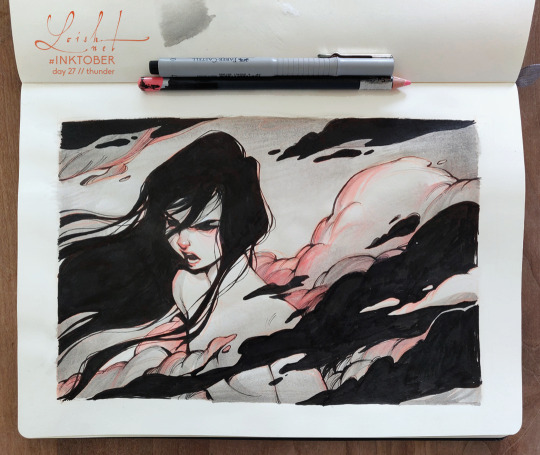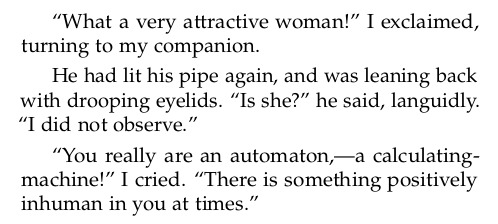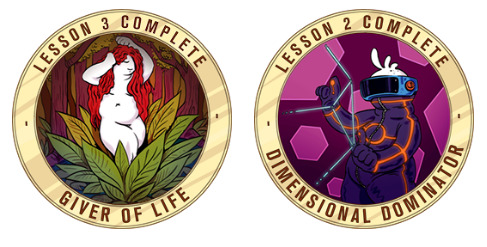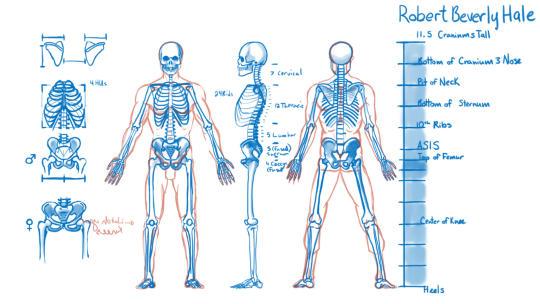Text
I spent way longer than I should have on this background prop.
3 notes
·
View notes
Photo
I really like this piece.


A digital remake of an older drawing I made for inktober in 2018 ✨⠀
16K notes
·
View notes
Text

Sherlock Holmes having a universal ace experience -- expressing disinterest and immediately getting called an inhuman robot.
46K notes
·
View notes
Text

Some stuff to fix in the puppet but I'm quite pleased with how these tests are looking so far. My drawing skill have come a long way since I released my last animation, whoop.
0 notes
Text
Notes for later -
Handy toon shading tutorial
https://www.youtube.com/watch?v=AMKc489OqZE
0 notes
Photo

Here’s a diagram showing the preferred proportions of three great artists: Dr. Paul Richer, Robert Beverly Hale, and Andrew Loomis.
139 notes
·
View notes
Text
youtube
Two of my favourite satirists... :O
1 note
·
View note
Text
A clip from 2017, I really regret not finishing this Half Full episode. It would have started with a homage to the opening of The Naked Gun socking it to Vladimir Putin.
0 notes
Photo


A digital remake of an older drawing I made for inktober in 2018 ✨⠀
16K notes
·
View notes
Text

Whoop! I've managed to complete two Draw A Box lesson this year!
0 notes
Text
youtube
Crib notes
Bridgman Bootcamp offers free high-quality recordings that help you understand Bridgman's books.
The videos have been edited to remove distractions and enhanced with additional commentary, opinions, and resources.
The books are a record of George Bridgman's drawings and some of his writing, and they are worth the cost.
The first lesson will show you why you may need help understanding the books and will include only a portion of the images from the books.
Marshall Vandroff is the teacher and fellow student of George Bridgman in the video series.
There is no "e" in Bridgman, and it's important to spell it correctly for the password to access the forum.
Some people criticize Bridgman's lack of refinement, personality, and storytelling, but his drawings of figures are impressive and worth studying.
Some parts of Bridgman's drawings may be incomprehensible at first glance, but they contain informed lines and a lot of anatomy.
The text is about art books by Bridgman.
There are two smaller books with most of his drawings.
Bridgman's first book was published when he was old, which gives hope to older people.
"Constructive Anatomy" and "The Human Machine" are popular books by Bridgman.
"The Complete Guide" by Sterling Publications is the best collection.
The next half-hour will be a boot camp to learn how to draw through Bridgman.
Bridgman emphasizes having a clear conception of what to draw before making a line.
There are arguments for and against this approach to drawing.
The video mentions an amazing student named Blake who could effortlessly see and draw his ideas.
Bridgman will take readers through a section called "How to Draw the Figure."
The speaker finds Bridgman's book on figure drawing difficult to learn from due to lack of context and difficult explanations.
Three principles to learn from Bridgman's book: simplicity, proportion (active and inactive sides), and rhythm (balance, unity, and rhythm will be covered next week).
The human body can be simplified to three large masses: head, thorax, and pelvic block.
The way these masses are arranged gives the figure an aesthetic quality or rhythm.
Learning to draw requires acquainting the subconscious mind with a certain amount of material, including anatomy, form, and proportion.
The ribcage presses down, stretches and squashes, which is controlled by three masses of bones.
The knee has a form and crunches and flexes. The gluteus maximus makes the upper leg go down to the calf and then into the foot.
Flesh crunches and stretches together, creating a 3D effect.
Curved lines show that a lower leg is going away from us, while arcs show that it is coming toward us.
Artists need to think about graphic design, toward us and away from us, crunched and open, and rhythm when inventing a figure.
Bridgman suggests starting with straight lines to get proportions right.
To make a figure look like flesh, anatomy knowledge is important.
The rectus femoris is a muscle that comes out of the boxy shape of the leg and melds with other muscles.
#BridgemanBootcamp#FigureDrawingLessons#GeorgeBridgeman#ArtInspiration#AnatomyDrawing#ArtistsCommunity#EmpathyInArt#ArtAppreciation#ValuesControl#CharacterDesign#Drawing#FigureDrawing#Figure#Youtube
0 notes
Text
youtube
Really handy tip to see shapes when drawing.
0 notes
Text

Playing with character design, i'm quite pleased with this.
0 notes
Text
youtube
The use of a flour sack as a tool for animation dates back to the early days of hand-drawn animation. In the early 20th century, animation studios were looking for ways to create more realistic movements for their characters, and animators began using everyday objects as reference points.
One of the most common objects used was the flour sack. At the time, flour was often sold in sacks made of cotton or linen fabric, which made them durable and reusable. Animators found that the way a flour sack moved and reacted to different forces was similar to the way a human body moved, making it an ideal reference point for animating characters.
In the 1920s and 1930s, animation studios such as Walt Disney Productions and Warner Bros. began using the flour sack as a key tool in their animation process. Animators would attach a small weight to the bottom of a flour sack and use it to simulate the movement of a character's body or clothing. By observing how the flour sack moved in response to different forces, animators could create more lifelike movements for their characters.
The use of the flour sack continued to evolve throughout the decades. In the 1940s, legendary animator Preston Blair used the flour sack as a basis for his instructional book "Advanced Animation," which became a seminal work in the field of animation. In the 1950s and 1960s, the flour sack was used as a teaching tool in animation schools around the world, helping to train a new generation of animators.
With the advent of computer animation in the 1980s and 1990s, the use of the flour sack declined somewhat. However, the principles of animation that were learned through the use of the flour sack continued to be used in digital animation, and the flour sack remains an important part of the history of animation.
Today, the flour sack remains a beloved symbol of the early days of animation, and animators around the world still use it as a teaching tool and reference point. Its enduring legacy is a testament to the creativity and ingenuity of early animators, who found inspiration in the most unlikely of places.
1 note
·
View note
